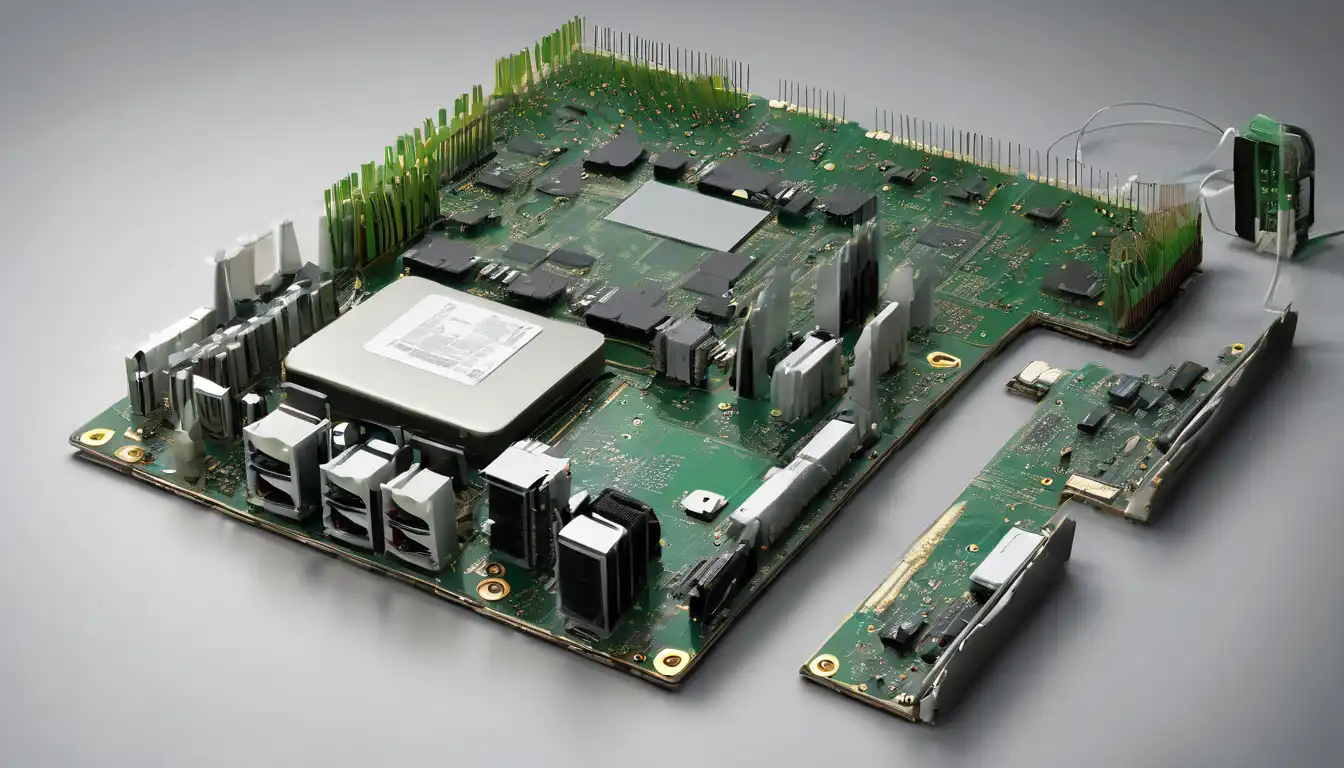The Rise of Sustainable Computing
As climate change concerns continue to escalate, the technology industry faces increasing pressure to adopt more environmentally responsible practices. Sustainable computing represents a paradigm shift in how we design, manufacture, and utilize hardware components. This movement addresses the significant environmental impact of traditional computing systems, from energy consumption to electronic waste. The transition to eco-friendly hardware solutions isn't just an environmental imperative—it's becoming a competitive advantage for forward-thinking companies.
The global push for sustainability has catalyzed innovation across the hardware spectrum. Manufacturers are rethinking every aspect of product lifecycle, from material sourcing to end-of-life disposal. This comprehensive approach ensures that environmental considerations are integrated at every stage, rather than being treated as an afterthought. The result is a new generation of computing hardware that delivers performance while minimizing ecological footprint.
Energy-Efficient Processors and Components
Modern processors have made remarkable strides in energy efficiency without compromising computational power. Leading chip manufacturers now prioritize performance-per-watt metrics, developing architectures that deliver maximum computing capability with minimal energy consumption. These advancements are particularly crucial for data centers, which account for approximately 1% of global electricity demand.
Key innovations in processor technology include:
- Advanced power management features that dynamically adjust voltage and clock speeds
- Multi-core architectures that distribute workloads efficiently
- Specialized accelerators for specific tasks like AI processing
- Improved thermal design that reduces cooling requirements
Beyond processors, other components are also evolving. Memory manufacturers are developing low-power DDR modules, while storage companies are creating SSDs with enhanced energy profiles. These collective improvements contribute to significant energy savings across entire systems.
Sustainable Manufacturing Practices
The environmental impact of hardware begins long before products reach consumers. Sustainable manufacturing addresses this through several key strategies. Many companies now utilize recycled materials in their products, reducing the need for virgin resource extraction. Some manufacturers have implemented closed-loop recycling systems where old devices are broken down and their materials reused in new products.
Manufacturing facilities themselves are becoming more sustainable through:
- Renewable energy adoption in production plants
- Water conservation and recycling systems
- Reduced chemical usage in manufacturing processes
- Localized production to minimize transportation emissions
These practices not only reduce environmental impact but often result in cost savings through improved efficiency. The industry is moving toward circular economy principles where waste is minimized, and materials are kept in use for as long as possible.
Modular and Upgradeable Design
One of the most effective strategies for sustainable computing is extending product lifespan through modular design. Traditional computers often become obsolete when a single component fails or becomes outdated, leading to premature disposal. Modular systems address this by allowing individual components to be upgraded or replaced independently.
The benefits of modular design include:
- Reduced electronic waste through targeted upgrades
- Cost savings for consumers who can upgrade incrementally
- Easier repairs that extend product usability
- Customization options that match specific needs
Several companies now offer frameworks for building modular computers, where components like processors, memory, and storage can be easily swapped. This approach challenges the throwaway culture that has dominated electronics for decades and represents a significant step toward true sustainability.
Renewable Energy Integration
Sustainable computing isn't just about the hardware itself—it's also about how that hardware is powered. The integration of renewable energy sources represents a critical component of eco-friendly computing solutions. Solar-powered computing devices are becoming increasingly viable for certain applications, particularly in remote or off-grid scenarios.
Data centers, which form the backbone of modern digital infrastructure, are leading the charge in renewable energy adoption. Major cloud providers have committed to powering their operations with 100% renewable energy, investing in solar and wind projects to offset their substantial energy demands. On a smaller scale, energy-efficient hardware designs make it more practical to power computing systems with renewable sources.
Lifecycle Management and Recycling
Proper end-of-life management is essential for sustainable computing. Electronic waste contains valuable materials that can be recovered, as well as hazardous substances that must be handled responsibly. Comprehensive recycling programs ensure that obsolete hardware doesn't end up in landfills where it can leach toxins into soil and water.
Effective lifecycle management involves:
- Designing for disassembly to facilitate recycling
- Establishing take-back programs for used equipment
- Partnering with certified e-waste recyclers
- Developing markets for refurbished equipment
Many manufacturers now offer trade-in programs that provide credit toward new purchases when customers return old devices. These programs not only encourage proper disposal but also help extend the useful life of hardware through refurbishment and resale.
The Future of Sustainable Hardware
The trajectory of sustainable computing points toward increasingly sophisticated solutions. Emerging technologies like biodegradable electronics, which break down safely at end-of-life, represent the next frontier in eco-friendly hardware. Quantum computing, while still in early stages, promises unprecedented efficiency for certain computational tasks.
Industry standards and certifications are also evolving to provide clearer guidance for consumers and businesses seeking sustainable options. Programs like ENERGY STAR and EPEAT help identify products that meet specific environmental criteria, making it easier to make informed purchasing decisions.
As awareness grows and technology advances, sustainable computing will likely become the default rather than the exception. The hardware solutions available today represent just the beginning of a transformation that will reshape how we think about technology's relationship with our planet. By embracing these innovations, we can enjoy the benefits of computing while minimizing environmental impact.
The journey toward truly sustainable computing requires ongoing commitment from manufacturers, consumers, and policymakers alike. Through continued innovation and responsible practices, the technology industry can play a leading role in building a more sustainable future.
